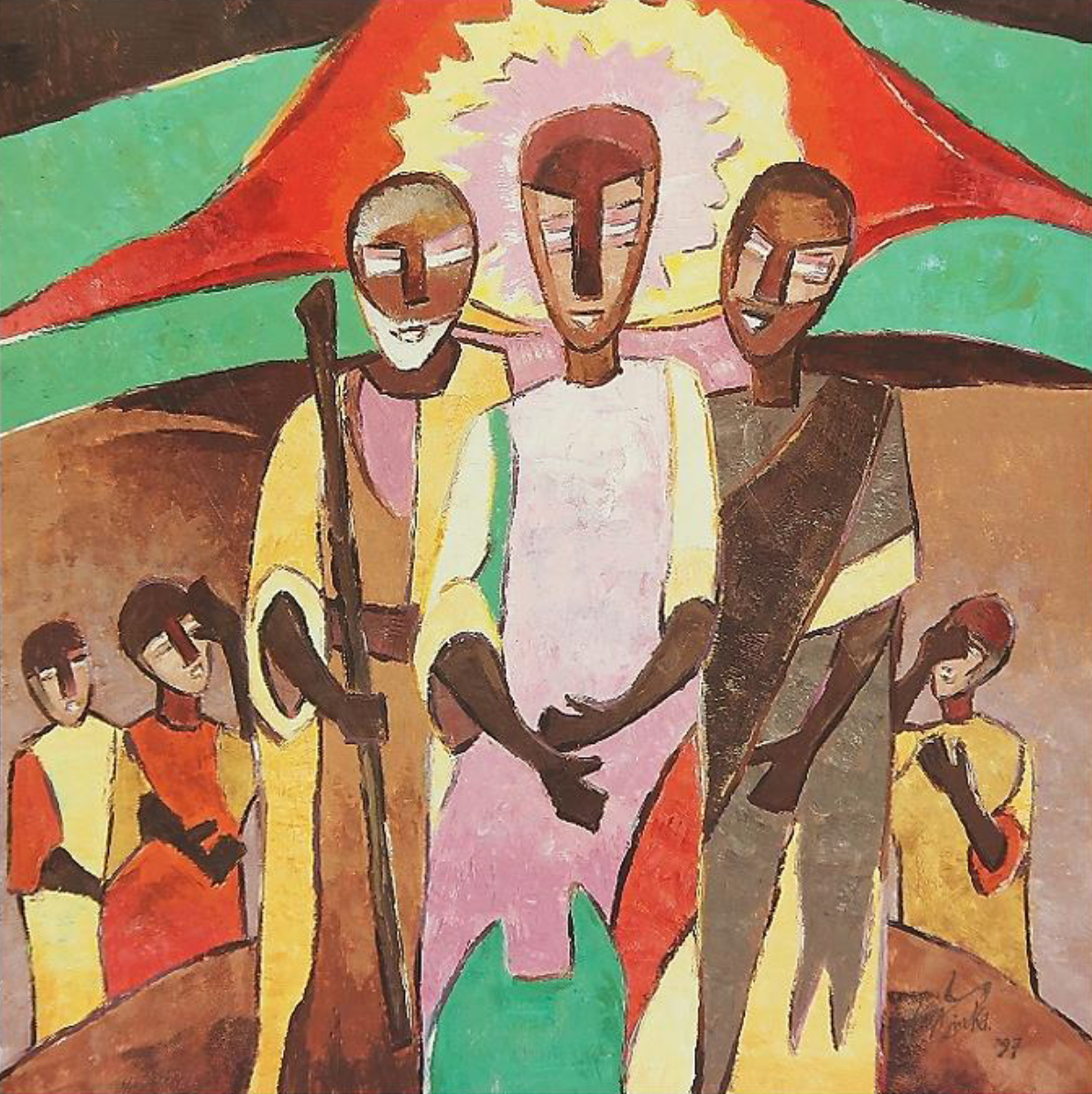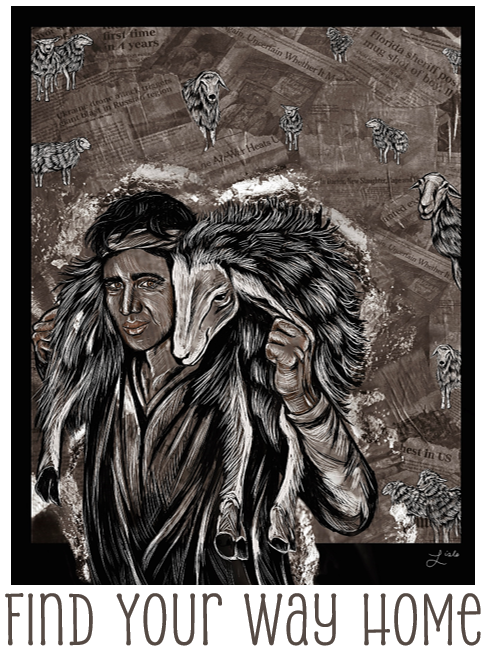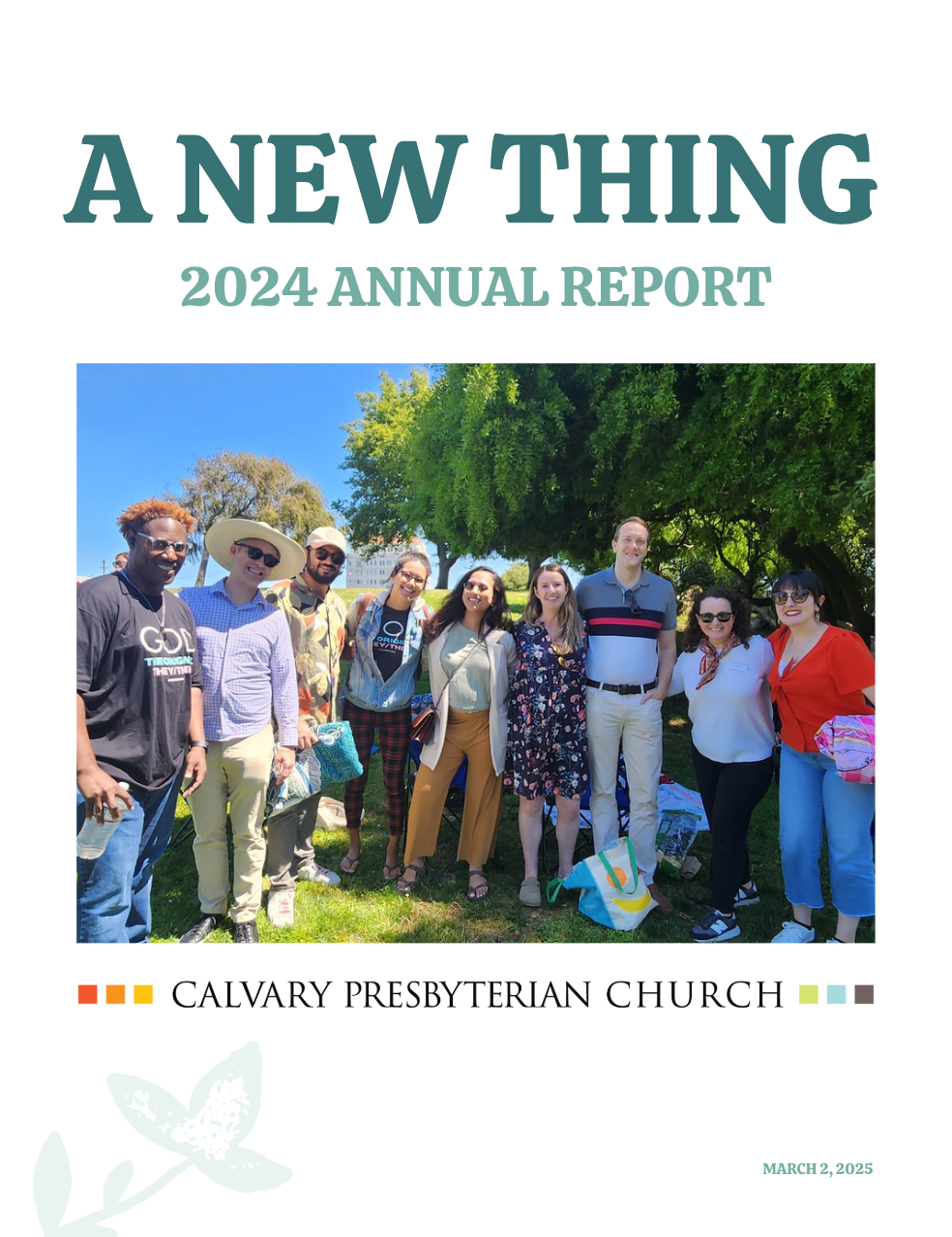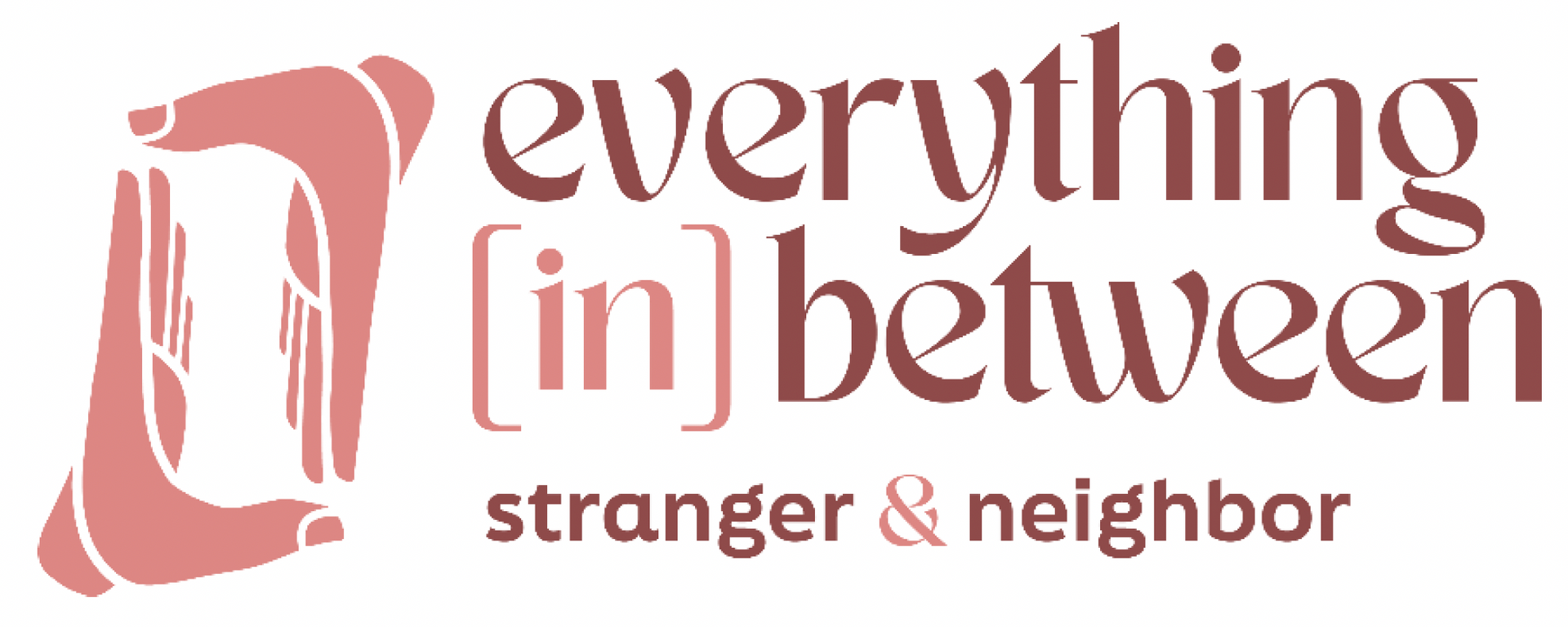Sermon 04.20.2025: 7am Sunrise - The Beloved Disciple
Sermon
In this gospel account, Mary Magdalene is the first person to the tomb of Jesus on Easter morning. That’s the same in all 4 gospels—women are the first witnesses to the resurrection. The first people to tell the world the Good News.
Mary sees the giant stone rolled away from the tomb and goes with my motto of “safety first” and does not enter it by herself.
From what she can tell, either the Romans have taken the body to keep Jesus from being a political martyr, or the religious leaders have taken it, to keep him from becoming a religious martyr—in either scenario, it isn’t safe to walk into a crime scene by oneself.
Mary will return to the tomb.
She will remain after the men have gone home.
She will see Jesus.
She will be the first person to proclaim the resurrection.
But for the moment, she’s alone at a tomb that should not be open, in the darkness of the early morning.
Mary goes back and tells the disciples what she saw, so she can have back up at the site of what is likely a robbery.
And Peter and the Beloved Disciple end up racing to the tomb. Eugene Burnand painted one of my favorite paintings, of Peter and the Beloved Disciple in the foot race. Cue the Chariots of Fire soundtrack.
I love this painting. It is at the Musee d’Orsay in Paris. I was wandering through the museum a number of years ago and came across the painting. Before I saw the title of the painting, I knew exactly who the men were and where they were going. Dawn is breaking. There is haste. There is hope. There is fear. There is more hope. “Could Mary’s report be true? Please let it be true.”
In Peter’s face, he of recently denying Jesus 3 times, there is a resignation–whatever he needs to face, he will face–if it could only be possible to wake up from the nightmare of the past few days.
You may have noticed Burnand had referred to Peter’s racing companion as John, even though the gospel calls him the one whom Jesus loved. And many scholars over the years have declared the one whom Jesus loved to be John, the writer of the 4th gospel, which makes sense if John is some sort of egomaniac who refers to himself in the 3rd person as Jesus ’favorite.
It seems odd, doesn’t it? The idea that Jesus has a favorite?
I mean, other than me.
Maybe it’s John. It could be.
Some people have wondered if it is Lazarus. Earlier in the gospel, he’s been in his own tomb, so he might have the personal experience to have hope about the report of an empty tomb. When Lazarus had died, before Jesus called him out of the tomb by name, we’re told, in what is famously the shortest verse in the bible: Jesus wept. The friend he loved was dead. I think a strong case could be made for Lazarus racing to the tomb with Peter rather than John.
Dan Brown, the author of the DaVinci Code, and other such rabble rousers, might make the case that Jesus beloved disciple was a woman. Scandal! Intrigue!
I suspect if that were the case, we’d have seen a lot more scholarly papers about it, and it wouldn’t have taken until the mid-20th century for women to be given the denominational sanction to be the preachers we’ve always been. I don’t think the Greek pronouns really support the idea of it being a woman, as much as I’d like it.
There’s a scene, when Jesus is on the cross, that argues against a female beloved disciple too. John’s gospel reports this story:
“When Jesus saw his mother and the disciple whom he loved standing beside her, he said to his mother, ‘Woman, here is your son.’ Then he said to the disciple, ‘Here is your mother. ‘And from that hour the disciple took her into his own home.”
Whoever the beloved disciple was, he took Jesus ’mother into his home, as a son cares for a mother. From that hour. No longer strangers, but family.
We all know stories like that. One minute, people are strangers, or maybe friends. The next minute, family.
Being adopted, I knew the truth of a story like that before I knew anything else. My adoptive parents and older sister were a complete family, until they adopted me and immediately expanded their definition of family to include me.
As some of you know, ten years ago, I got my birth certificate and started meeting my birth family. It’s astonishing, really, to consider. In most all cases, members of my birth family answered a phone call from a total stranger—me—and from that call, instantly, expanded their definition of who was included a part of their family.
In an instant, I went from being nobody to being family. The welcome I’ve received, while it did have a few rough patches, has really been humbling and amazing. And it has reminded me of the wildly inclusive love of God, that causes us to be joined to God’s family. My birth family has shown me God’s own love, welcoming me into their family.
In Ephesians 2, Paul writes,
“But now in Christ Jesus you who once were far off have been brought near by the blood of Christ. For he is our peace; in his flesh he has made both groups into one and has broken down the dividing wall, that is, the hostility between us. He…reconciles both groups to God in one body through the cross, thus putting to death that hostility through it. So he came and proclaimed peace to you who were far off and peace to those who were near; for through him both of us have access in one Spirit to the Father. So then you are no longer strangers and aliens, but you are citizens with the saints and also members of the household of God,”
Throughout the gospels, Jesus tries to expand our understanding of who counts as family. We, who were far off, are brought near. Not just close by into the courtyard, but near, into God’s home, into God’s family.
Even at the cross, as Jesus’ mother has to watch her son be crucified—she does not have to be alone in her grief and pain. The pain is her own, but the beloved disciple stands there next to her and Jesus makes a connection between them. In their grief, in the brokenness of the world, there can still be connection.
We have so much that divides us these days—walls, politics, how we feel about the Lakers—so many things. And while social media can help people stay somewhat connected to far off loved ones, studies show it isolates us. And the political powers of the world want us to be isolated too.
But God is about community. We believe in a triune God—father, son, and holy spirit. Even God exists in community.
Is the worry and grief of the world isolating you right now?
Don’t let the world keep us separated from each other. Jesus’ mother could have stood at the cross and decided that since nobody else knew her pain, that she was all on her own.
Instead, she and the beloved disciple become family.
Instead, her story stands as witness for all mothers, through the years and even right now in our own country. Mothers who have had to watch their sons be unjustly detained, tortured, and killed by the state without due process. Jesus’ mother stands with them even as they feel alone.
In the story of the Cross and Resurrection, our personal pain can be transformed, shared, and borne by others, as the family of God.
And now it’s Easter morning, and Mary Magdalene has come back to report her news. Peter and the Beloved Disciple, who has just gained an extra mother, go racing off to the tomb.
They see the empty tomb, the discarded grave cloths and they “saw and believed; for as yet they did not understand the scripture, that he must rise from the dead. Then the disciples returned to their homes.”
Maybe they believed in the resurrection. But since the text says they didn’t yet understand the scriptures, I think it means they believed what Mary had told them, that Jesus is not in his tomb. And they go home.
The older I get, the more I think one of the most important lessons in the Easter story is the importance of listening to someone else’s testimony and believing what they tell you, even if it doesn’t always make sense, even if it isn’t an experience you’ve had too.
Don’t lose track of the gift that comes from hearing and accepting someone else’s testimony. How else would Peter and the Beloved Disciple have known about the resurrection, had they not believed Mary, if they’d told her not to overreact?
So who is the beloved disciple?
One other candidate I haven’t mentioned, is you. Some scholars have suggested it was a way for John to leave space for you and I in the story. The beloved disciple shows up late to the story in John’s gospel. He isn’t mentioned until the last week of Jesus’ life, when he asks Jesus who will betray him while they celebrate the last supper.
We too, show up late in the story.
The beloved disciple is one who accompanies Mary Magdalene to the tomb. He sees, and believes her.
We too, accompany people into stories of uncertainty and fear, bearing witness with them as they face things they cannot begin to imagine, believing the truths of their difficult stories.
He is there for a resurrection appearance, where the disciples bring in a huge haul of fish—perhaps symbolizing the way Jesus’ followers fish for people.
We too, fish for people, participating in work that shares God’s love for the world.
The book of John claims to be written because of the testimony of the beloved disciple. And how do people know about Jesus now, 2000 years later? Because of the testimony of Jesus’ disciples.
We too, share the stories of where we’ve seen God’s love so people will know their inclusion in God’s family.
If we are the beloved disciple, we have a particular responsibility to both testify to God’s love and mercy and to continue to help the world re-order who we call family. Earlier in John’s gospel, he writes, “For God so loved the world, God gave the only Son…”
We experience God’s love in personal ways in our own lives, which is how love works. But God’s love was for the whole world. God’s sense of family is global, and ever more inclusive than we know how to be. It doesn’t say, “For God so loved only me that God Gave the only Son.”
We ought to be cautious if we are satisfied with a private and personal faith that ignores the pain of the world.
Easter is bigger than that.
In the cross, God took on the pain and brokenness of the world. On Easter, God showed the depth, the breadth, the width of divine love for the world. There is no pain, no experience we can have that God has not experienced. Will you carry the depth of that belovedness with you into the world?
After the hallelujahs are sung today, we go back into a world that needs to be reminded of our connectedness, our belovedness, our family status, as members of the household of God.
When we see people grieving in pain and loss—we behold our mother. We take them into our circle of concern. Their pain and loss become something that matters to us, personally.
When people build dividing walls between us, the categories that separate us, we are reminded to behold our mother, our sibling. Their exclusion becomes our exclusion, something that matters to us, personally.
When we offer compassion to people whose experiences are different than ours, we are reminded to behold our mother, our siblings, our family. We love them because God so loved the world. God has declared them beloved. We behold each other as family, and we work to not re-assemble the dividing walls between us.
Jesus’ resurrection shows us the depth of God’s love for the world. As we race to the tomb today, as light dawns on a weary world, may understanding also dawn on us. God’s love for the world is love for each of us. And it is love without limits, dividing walls, or exclusion.
Go be the beloved disciple. Make sure others know their belovedness too. Amen.











